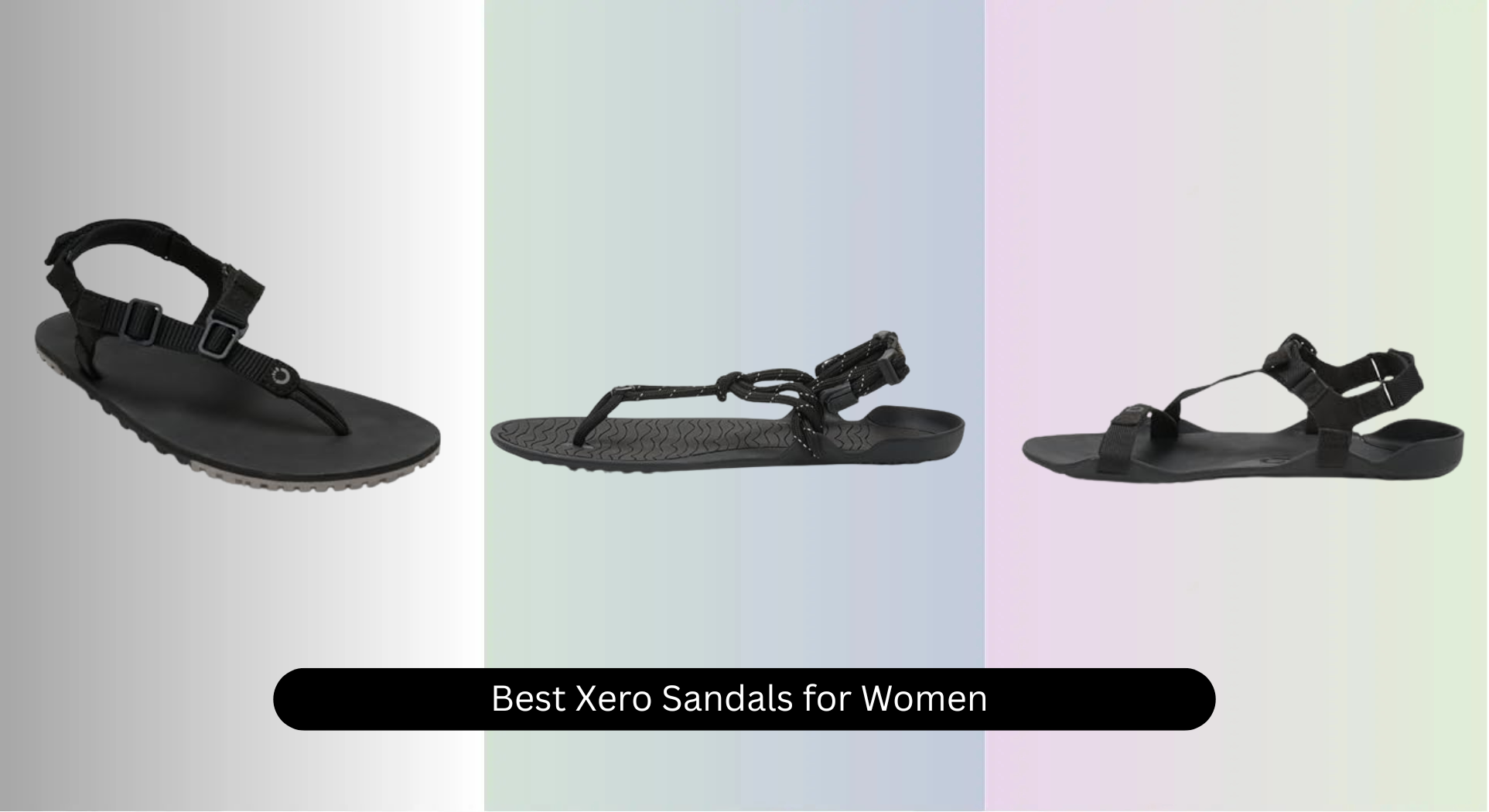Your feet carry the weight of your entire body every single day, yet they’re often the most neglected part of our wellness routine. Foot health plays a crucial role in overall well-being, influencing everything from mobility and posture to chronic pain management. When foot health is compromised, it can have a cascading effect on other areas of life. Ignoring foot problems can result in reduced mobility, leading to a sedentary lifestyle and associated health risks such as obesity and cardiovascular issues.
By understanding the importance of foot care and incorporating simple, proactive habits, we can enhance not only our physical health but also our mental and emotional well-being. After all, a solid foundation is key to a strong and healthy life.
Understanding the Role of Foot Health

The Feet as the Foundation of the Body
Think of your feet as the building blocks of your body. Just as a house requires a solid foundation to stand tall, your body needs healthy feet to support movement and balance. Your feet contain 26 bones, 33 joints, and over 100 muscles, ligaments, and tendons, making them one of the most complex structures in the human body. They work tirelessly to absorb shock, distribute weight, and propel you forward.
When this foundation weakens due to injury, poor care, or aging, the effects ripple through the body, causing problems in the knees, hips, back, and even neck. It’s no exaggeration to say that healthy feet are critical to overall body alignment and function.
Connection Between Foot Health and Quality of Life
Have you ever had a blister or stubbed a toe? Then you’ve likely experienced how even minor foot issues can disrupt daily activities. Foot health is directly tied to your quality of life because it dictates your ability to move freely and comfortably. Whether it’s standing at work, walking your dog, or dancing at a party, healthy feet enable you to enjoy life to the fullest.
Ignoring foot health can lead to chronic issues like arthritis or plantar fasciitis, making everyday tasks painful and challenging. By prioritizing foot care, you ensure better mobility, which leads to a more active, fulfilling life.
Common Misconceptions About Foot Care
Unfortunately, many people assume foot care is only necessary for athletes or those with pre-existing medical conditions. Others think sore feet are a normal part of life, especially as they age. These misconceptions prevent individuals from seeking timely care and adopting preventative measures.
The truth? Foot care is for everyone. Even small steps, like wearing comfortable shoes or moisturizing your feet, can prevent long-term issues. The earlier you begin caring for your feet, the fewer problems you’ll face later in life.
Anatomy of the Human Foot
Key Structures and Functions
Your feet are marvels of engineering. The bones in your feet make up about 25% of all the bones in your body. These bones are interconnected by ligaments and cushioned by cartilage, allowing for smooth motion. Meanwhile, muscles and tendons provide the strength and flexibility needed for walking, running, and balancing.
The arches in your feet play a pivotal role in distributing weight evenly across your body, reducing strain on other joints. This delicate balance of structure and function is why even minor injuries can have significant consequences.
The Importance of Biomechanics
Biomechanics refers to the way your feet move and interact with the ground. Proper biomechanics ensure efficient movement, reduce stress on the joints, and prevent injuries. However, when biomechanics are off—due to flat feet, high arches, or improper footwear—it can lead to discomfort and long-term problems.
Regular assessments of your foot biomechanics, especially if you’re an athlete or have an active lifestyle, can help you make necessary adjustments for optimal performance and health.
How Aging Affects the Feet
As you age, your feet undergo significant changes. The fat pads on the soles of your feet begin to thin, reducing natural cushioning. Skin becomes drier, making cracks and infections more likely. Conditions like arthritis or bunions also become more common with age.
Recognizing these changes and adapting your foot care routine accordingly can help mitigate the effects of aging. From using orthotics to ensuring proper hydration, small changes can make a big difference.
Common Foot Problems and Their Impact
Plantar Fasciitis and Heel Pain
Plantar fasciitis is one of the most common causes of heel pain, resulting from inflammation of the plantar fascia—a thick band of tissue running along the bottom of your foot. This condition can make simple activities like walking or standing excruciatingly painful.
Treatment options range from rest and ice to physical therapy and custom orthotics. Early intervention is key to preventing chronic pain and ensuring long-term mobility.
Bunions, Corns, and Calluses
Bunions are bony bumps that form at the base of the big toe, often caused by genetics or ill-fitting shoes. Corns and calluses, on the other hand, result from repeated friction or pressure. While these issues may seem minor, they can become painful and limit your activity levels.
Preventative measures, such as wearing roomy shoes and using protective pads, can help. In severe cases, medical intervention may be necessary.


Diabetic Foot Complications
For individuals with diabetes, foot health is particularly critical. High blood sugar levels can damage nerves and reduce blood flow to the feet, leading to slow-healing wounds and an increased risk of infection.
Proper foot care—including daily inspections, wearing specialized footwear, and consulting a podiatrist—is essential to avoid serious complications like ulcers or even amputations.
Nerve Damage and Circulation Issues in Diabetes
Diabetic neuropathy can cause numbness, making it harder to notice injuries or pressure sores. Meanwhile, poor circulation slows healing and increases the likelihood of infections. Regular monitoring and proactive care are essential to maintain healthy feet in diabetic patients.

How Foot Health Affects Overall Well-being
The Link Between Foot Pain and Posture
Foot pain can throw your entire body out of alignment. When your feet hurt, you unconsciously shift your weight or change how you walk to compensate, leading to poor posture. This adjustment can strain your knees, hips, and back, triggering a domino effect of discomfort.
For example, plantar fasciitis can cause you to limp or favor one side of your body, resulting in muscle imbalances. Similarly, bunions or flat feet may alter your gait, further exacerbating alignment issues. Addressing foot pain early with orthotics, proper footwear, or therapy helps maintain good posture and overall musculoskeletal health.
How Foot Health Influences Mobility and Independence
Mobility is the cornerstone of an active, independent life, and foot health plays a vital role in this. Persistent foot problems can limit your ability to walk, climb stairs, or perform everyday tasks. This reduced mobility often leads to a sedentary lifestyle, which can cause weight gain, heart problems, and even depression.
For older adults, foot health is even more critical. Falls due to poor balance or foot pain are a leading cause of injury in seniors. Investing in foot care ensures you remain active and independent longer, preserving your quality of life.
Mental Health Implications of Chronic Foot Pain
Chronic foot pain doesn’t just hurt physically—it also takes a toll on mental health. Living with constant discomfort can lead to anxiety, frustration, and depression, especially if it limits your ability to enjoy hobbies or spend time with loved ones.
For example, someone who enjoys hiking might feel disheartened if bunions or plantar fasciitis prevent them from hitting the trails. Seeking professional care for chronic foot pain not only improves physical health but also enhances emotional well-being.
Preventative Foot Care

Regular Foot Hygiene and Maintenance
Clean, healthy feet are the foundation of preventative care. Wash your feet daily with warm water and mild soap, paying attention to areas between the toes. After drying them thoroughly, apply a moisturizing lotion to prevent dryness and cracking.
Regularly trimming your nails is essential to avoid ingrown toenails, which can become painful or infected. Additionally, inspect your feet for signs of blisters, calluses, or cuts. Early detection and care can stop minor issues from escalating.
Choosing the Right Footwear
The wrong shoes can wreak havoc on your feet. Tight shoes can cause bunions and blisters, while unsupportive footwear leads to issues like plantar fasciitis or flat feet. Opt for shoes with proper arch support, cushioning, and a wide toe box to allow your feet to move naturally.
For athletes, wearing sport-specific shoes minimizes the risk of injuries. Remember, replacing worn-out shoes regularly is just as important as selecting the right pair in the first place.
The Role of Regular Check-ups with a Podiatrist
Many people wait until they’re in pain to see a podiatrist, but routine check-ups are essential for preventative care. A podiatrist can identify issues like poor biomechanics, recommend orthotics, or treat skin and nail conditions before they worsen.
If you have chronic conditions like diabetes or arthritis, regular podiatric visits are even more important to monitor for complications and maintain foot health.
Exercise and Its Benefits for Foot Health
Strengthening Exercises for Foot Muscles
Strengthening exercises can improve your feet’s resilience and prevent injuries. Toe curls, heel raises, and arch lifts target specific muscles, helping to maintain proper alignment and balance. These simple exercises are easy to incorporate into your daily routine and can make a big difference in long-term foot health.
Importance of Stretching and Flexibility
Stretching exercises, such as calf stretches and toe stretches, increase flexibility and relieve tension in your feet. This is particularly helpful for preventing conditions like plantar fasciitis, which is often linked to tight calf muscles.
Incorporate stretching into your warm-up or cool-down routines to keep your feet limber and reduce the risk of injury.
Low-Impact Exercises for Long-Term Foot Health
Low-impact activities like swimming, cycling, or yoga are gentle on the feet while still providing excellent cardiovascular benefits. These exercises reduce stress on your joints and improve circulation, which is vital for foot health, especially as you age.
Special Considerations for Different Groups
Foot Care Tips for Athletes
Athletes put significant stress on their feet, making them more susceptible to injuries like sprains, stress fractures, and blisters. Investing in sport-specific shoes, using insoles, and practicing proper warm-ups and cool-downs are key. Regularly checking for signs of overuse or strain can also prevent long-term damage.
Considerations for Seniors
Aging brings unique foot challenges, from thinning skin to reduced flexibility. Seniors should prioritize comfortable, supportive footwear and regular check-ups with a podiatrist. Exercises that improve balance and strength can also help reduce the risk of falls.
Pediatric Foot Health: Setting the Foundation Early
Foot care in children is about prevention and development. Ensuring proper footwear during growth stages and addressing any issues like flat feet early can set them up for a lifetime of healthy movement.
Signs You Need to See a Specialist
Persistent Pain or Swelling
Pain or swelling that doesn’t resolve with rest or home remedies may indicate a more serious issue like a fracture, arthritis, or tendonitis. A podiatrist can provide an accurate diagnosis and treatment plan.
Changes in Skin or Nail Condition
Discolored nails, persistent athlete’s foot, or unusual growths like warts should not be ignored. These could signal infections or other underlying problems that require professional attention.
Difficulty Walking or Standing for Prolonged Periods
If you struggle with walking or standing for extended periods, it could be a sign of biomechanical issues, poor circulation, or other medical conditions. Seeking help early can prevent worsening symptoms.
The Role of Technology in Foot Health

Innovations in Orthotics and Insoles
Custom orthotics and advanced insoles now offer tailored support for conditions like plantar fasciitis and flat feet. These devices improve comfort and alignment, making everyday activities more manageable.
Diagnostic Advancements for Foot Issues
Modern imaging technologies like 3D scans and gait analysis allow podiatrists to diagnose problems with unparalleled accuracy. Early diagnosis ensures more effective treatment and recovery.
Wearable Tech and Foot Health Monitoring
Smart insoles and wearable devices now track metrics like pressure distribution and step count, offering insights into your foot health. These innovations help prevent overuse injuries and encourage better movement habits.
Conclusion
Foot health is fundamental to overall well-being, influencing mobility, posture, and quality of life. By adopting proactive measures like regular hygiene, proper footwear, and exercise, you can prevent many common foot issues. Don’t wait for pain to start caring for your feet—start today to build a strong foundation for the future.
Frequently Asked Questions
Why is foot health often overlooked?
People often focus on more visible health concerns and overlook their feet until problems arise. However, proactive care can prevent many issues.
How can I find the right shoes for my feet?
Look for shoes with proper arch support, cushioning, and a roomy toe box. Consult a podiatrist or shoe specialist for personalized advice.
What are simple daily practices for better foot health?
Wash and moisturize your feet daily, wear comfortable shoes, and inspect them regularly for signs of injury or infection.
How do I care for my feet if I have diabetes?
Inspect your feet daily, keep them clean and dry, and see a podiatrist regularly. Wear specialized footwear to reduce pressure and prevent complications.
Can exercise worsen foot problems?
Not if done correctly! Choose low-impact exercises and ensure proper stretching and footwear to protect your feet.










